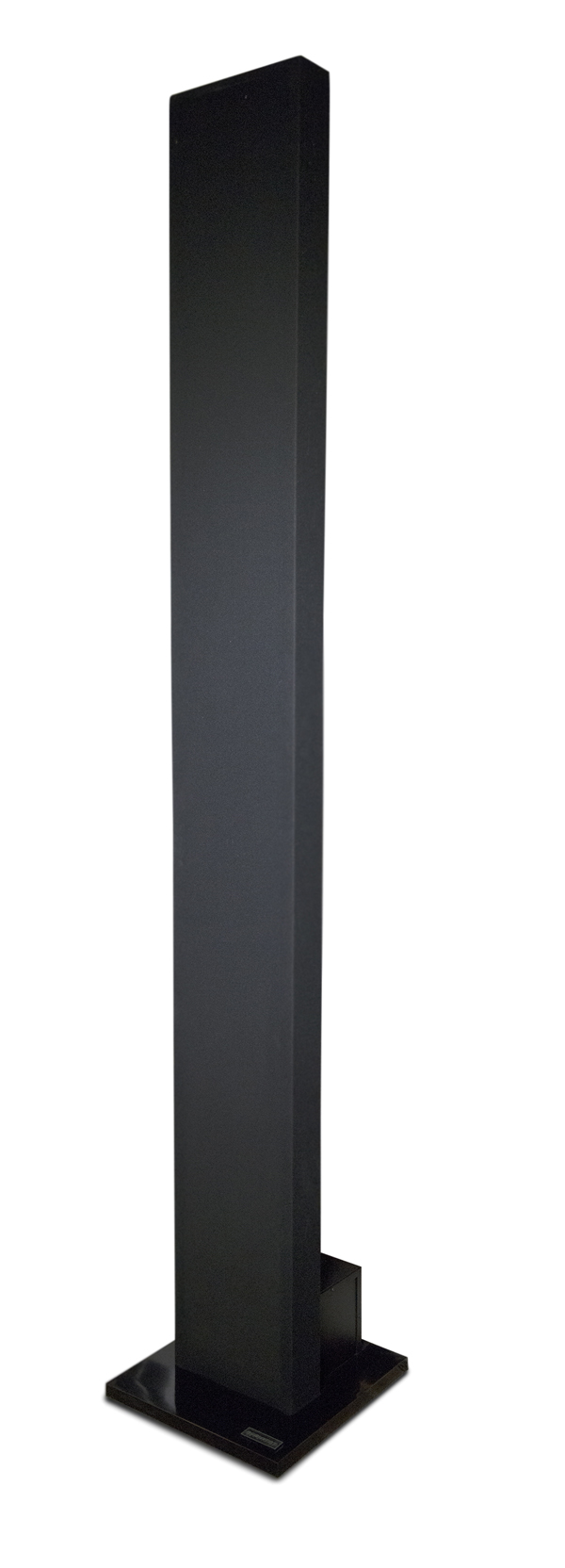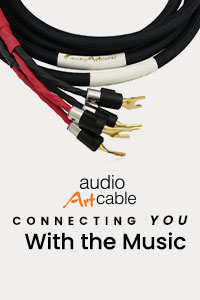Acoustat 1+1 Electrostatic Loudspeakers
 For many audiophiles, their journey with electrostats began with the legendary Quad 57—but not mine. As someone who really likes to rock, I spurned the audiophile approach and preferred to rock the house with my Altec 19s and a big McIntosh power amplifier. When our publisher Jeff Dorgay was giddy as a school girl with his first pair of Magnepans (turning his back on his beloved Cerwin Vegas speakers driven by a Phase Linear 400), I remained steadfastly nonplussed: They did not rock. I was equally unimpressed by his brief bout with a pair of Rogers LS3/5As. Fortunately, that phase passed quickly.
For many audiophiles, their journey with electrostats began with the legendary Quad 57—but not mine. As someone who really likes to rock, I spurned the audiophile approach and preferred to rock the house with my Altec 19s and a big McIntosh power amplifier. When our publisher Jeff Dorgay was giddy as a school girl with his first pair of Magnepans (turning his back on his beloved Cerwin Vegas speakers driven by a Phase Linear 400), I remained steadfastly nonplussed: They did not rock. I was equally unimpressed by his brief bout with a pair of Rogers LS3/5As. Fortunately, that phase passed quickly.
But one evening, Jeff bribed me with a lot of beer for helping him move a pair of Acoustat 2 speakers into his listening room. Little did I know that my life was about to change. I rolled my eyes, thinking, “Here we go again, another lame pair of panel speakers.” And on initial power up, these relatively small panels that only had about an 83 dB sensitivity rating did not impress. However, two days later, after the ESL panels were fully charged, these little Acoustats rendered music in a very interesting way, with a clarity and presence that the Magnepans just couldn’t muster and a delicacy that I had not yet experienced. They still needed a lot of power to move some air, and when these speakers were replaced with the much bigger 2+2s, I finally “got” the ESL thing—and I’ve remained a lover of the style ever since. But I tended to prefer the 1+1s, partly because they always remind me of the monolith in 2001: A Space Odyssey.
Charity Begins at Home
Perhaps the best thing about having audiophile buddies, especially ones that have a bit of adult ADD, is that they can’t sit still for very long, meaning there are always great deals to be had if you wait long enough. Car enthusiasts seem to be that way too. And camera enthusiasts, but I digress…
While the model 2 always seemed a bit congested and lacking in ultimate focus, with the 2+2 a little bit too round on the bottom end, my goldilocks speaker has always been the 1+1. Essentially the 2 with the panels on top of each other, rather than side by side, the 1+1 creates sonic images like few other speakers can, even today, thanks to a panel width of about 9 inches and a floor-to-ceiling height.
Back in the 1990s, I had a set of 1+1s that I paired with Jeff’s old Audio Research D79, and it was a match made in heaven in my 11-by-14-foot room. The 1+1s even generated decent bass and, just to be sure, I bought a pair of Quad 57s just to compare—not even close! Yes, the Quad has a midrange purity that is arguably tough to beat, but for this guy, the much greater low-frequency response and dynamic range of the 1+1 make it a more interesting daily driver.

Back to the Future
Driving today’s 1+1s with a pair of 100-watt Pass Aleph monos, combined with an ARC SP-11, makes for a kick-ass vintage system on a reasonable budget. Borrowing a friend’s D-79 to pair with the 1+1s brings back great memories, with a bit more romance through the midband, but the class A Pass amps make for more control and more bass wallop (not to mention eliminating the need to track down suitable tubes).
The original Acoustat ESL panel is nearly indestructible, but the power supply/interfaces are starting to have issues, mainly due to expired capacitors, with most of these speakers now over 30 years old. Thanks to speakers’ straightforward design, those handy with a soldering iron can easily replace the capacitors, and while you’re at it, take out the cheesy internal wire and replace it with a bit of your favorite premium wire from Cardas or Kimber, for a little more zip in the transparency department.
Later-model examples featured interfaces with the coveted “medallion upgrade,” improved transformers that coupled the panel to your amplifier and were wired with Monster Cable inside. Those of you with these speakers will notice that they’ve turned a nice shade of green, which is a wonderful patina for a copper roof, but not the greatest thing for an audiophile speaker.
You can send your interfaces to Roy Esposito at Audio Haven for a full refurb for about $600 a pair. We went this route and it was money well spent. Roy is semi-retired and a great guy, so don’t pester him to hurry. Let the man do his thing in peace and quiet. About a month later, your Acoustats will sound better than new, and he works on all models.
Setup of these speakers is a breeze: Move them about 3 feet from your back wall and start with the speakers about 5 feet apart; move them farther apart in 6-inch increments until the stereo image falls apart; then move them slightly back toward the center; and play with a touch of toe-in until you achieve imaging perfection.
It’s worth noting that a little bit of room treatment goes a long way with the Acoustats. I’ve always achieved the best results with some absorption right at the first reflection point, and either absorption or diffusion directly behind the panels will yield a more precisely focused stereo image. If room treatments are not an option, try moving the speakers slightly farther out in the room, however you will sacrifice a bit of bass extension by doing so.
Getting Some
If you’re looking for an alternative to a pair of Quad ESLs, I can’t suggest a pair of Acoustats highly enough, regardless of whether you have modern or vintage electronics. Unlike my other favorite electrostat, the MartinLogan CLS, the Acoustats are a bit easier to drive with tube electronics, but you sacrifice some of the CLS’s ultimate resolving power.
A clean pair of Acoustat 1+1s, with either cream or black grille cloth, should set you back about $600 to $800. As the grille cloth (or socks, as they’re often called) is nearly impossible to find these days, try to find a pair that have not been physically damaged. Should yours be ravaged by age, dirt or even cigarette smoke, an overnight soak in the tub with a potent elixir of bleach and OxiClean followed by a spin in your washing machine’s gentle cycle will have the cloth looking much better. Experience has taught me to dry them in the fluff cycle only—you don’t want any heat. Even though the socks are made of a synthetic material, there’s no sense in taking the chance of shrinkage. Resist the urge to dye them a funky color—or not. The vintage look of these speakers is definitely part of their appeal. – Jerold O’Brien





